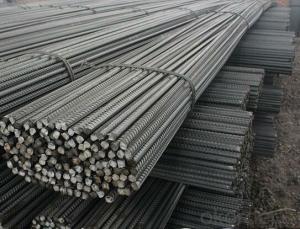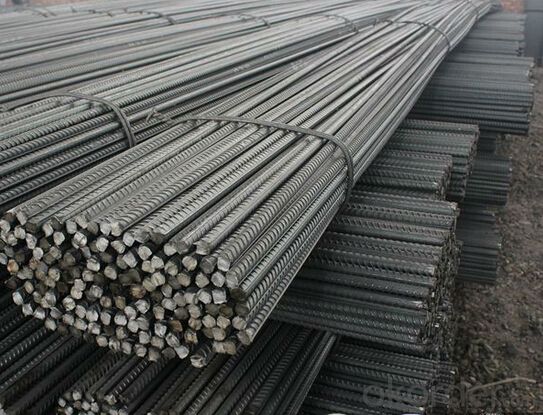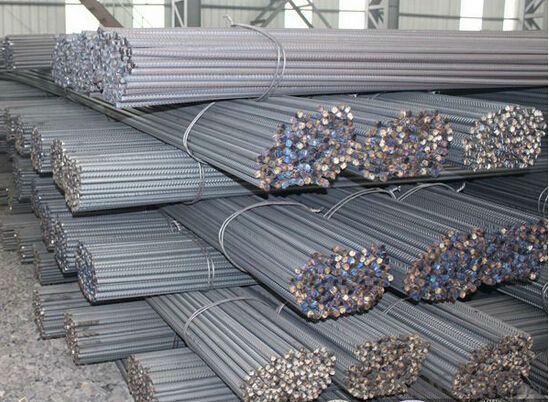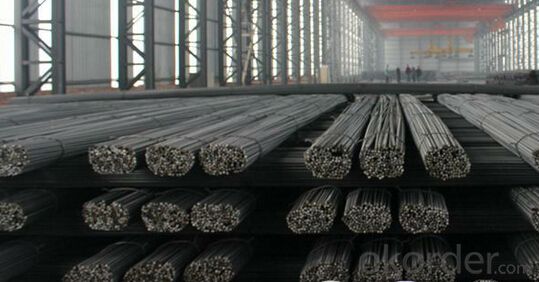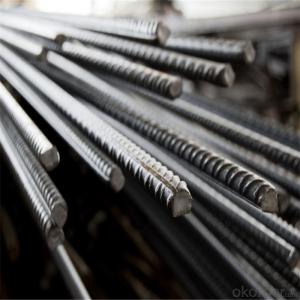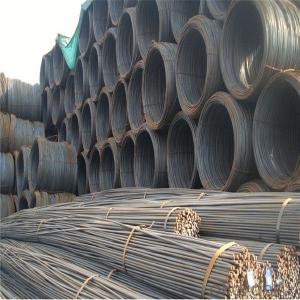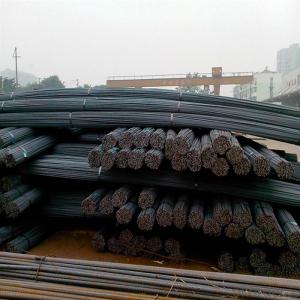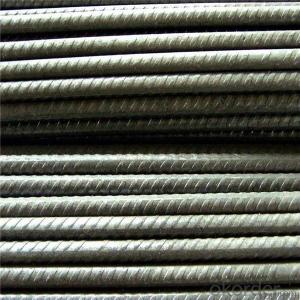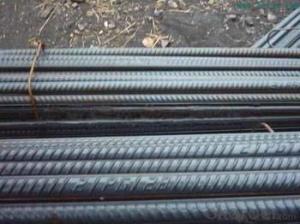Prime Oman Steel Rebar for Building Construction
- Loading Port:
- Tianjin
- Payment Terms:
- TT OR LC
- Min Order Qty:
- 100 m.t.
- Supply Capability:
- 10000 m.t./month
OKorder Service Pledge
Quality Product, Order Online Tracking, Timely Delivery
OKorder Financial Service
Credit Rating, Credit Services, Credit Purchasing
You Might Also Like
Specification
Standard:
AISI,ASTM,JIS,GB,BS,DIN,API,EN
Technique:
Hot Rolled,Cold Rolled,Cold Drawn,ERW,Forged,Saw,Extruded,EFW,Spring
Shape:
U Channel,Square,C Channel,Hexagonal,Round,Rectangular,Oval,LTZ
Surface Treatment:
Galvanized,Coated,Copper Coated,Color Coated,Oiled,Dry,Chromed Passivation,Polished,Bright,Black,PVDF Coated
Steel Grade:
Q195,Q215,Q235,Q215B,Q235B,RHB335,HRB400,200 Series,300 Series,400 Series,600 Series,SS400-SS490,10#,20#,A53(A,B)
Certification:
ISO,SGS,BV,IBR,RoHS,CE,API,BSI,UL
Thickness:
6-34mm
Width:
6-34mm
Length:
12m
Outer Diameter:
6-34mm
Net Weight:
10kg
Packaging:
seaworthy packaging
Prime Oman Steel Rebar for Building Construction
Details of the Prime Oman Steel Rebar for Building Construction
| Standard & Grade: | GB1499-98 : HRB335,HRB400,HRB500 |
| BS4449-1997 : GR460,GR500 | |
| CAN/CSA-G30.18-M92 : 400W | |
| ASTM A615 : Gr.40, Gr.60 | |
| Diameter: | 6mm;8mm;10mm;12mm;14mm;16mm;18mm;20mm;22mm;25mm;28mm;30mm;32mm;35mm;40mm |
| Length: | 6m,9m,12m |
| Packing: | Bundle packing |
| Origin: | China |
| Application: | Construction,Road,Machinery processing,Welding fields. |
| Delivery time: | 10-25 days |
| Shipment: | By bulk vessel or Container |
| Documents: | Mill Test Certificate,Commercial Invoice,Packing List,Certificate of Origin |
Company Introduction of the Prime Oman Steel Rebar for Building Construction
CNBM International Corporation is the most import and export platform of CNBM group(China National Building Material Group Corporation) ,which is a state-owned enterprise, ranked in 270th of Fortune Global 500 in 2015.
With its advantages, CNBM International are mainly concentrate on Cement, Glass, Iron and Steel, Ceramics industries and devotes herself for supplying high quality series of refractories as well as technical consultancies and logistics solution.
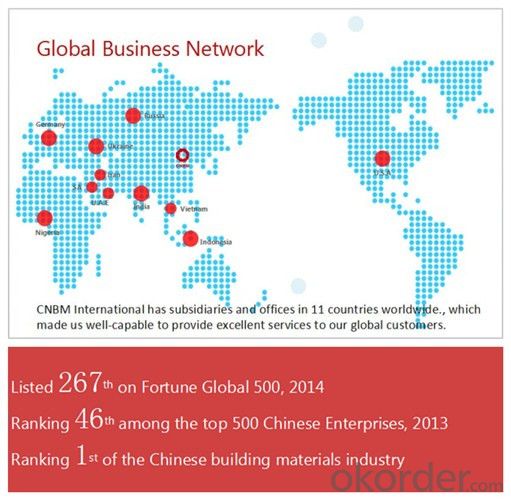
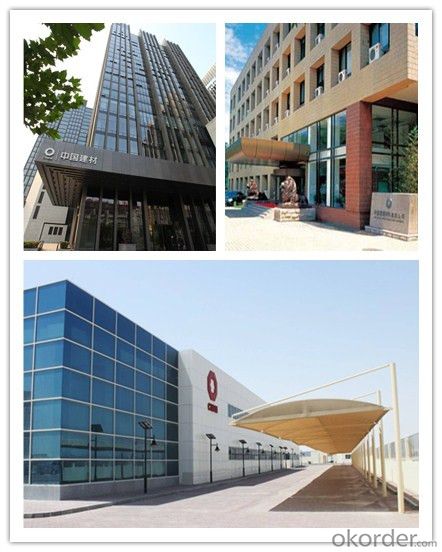
Packaging & Delivery of the Prime Oman Steel Rebar for Building Construction
| Packaging Detail | Sea worthy packing /as per customer's packing instruction |
| Delivery Detail | 15 ~ 40 days after receiving the deposit |
FAQ
| Are you a trading company or manufacturer? | Manufacturer |
| What’s the MOQ? | 1000m2 |
| What’s your delivery time? | 15-20 days after downpayment received |
| Do you Accept OEM service? | Yes |
| what’s your delivery terms? | FOB/CFR/CIF |
| What's the Payment Terms? | 30% as deposit,70% before shipment by T/T |
| Western Union acceptable for small amount. | |
| L/C acceptable for large amount. | |
| Scrow ,Paybal,Alipay are also ok | |
| Why choose us? | Chose happens because of quality, then price, We can give you both. Additionally, we can also offer professional products inquiry, products knowledge train (for agents), smooth goods delivery, excellent customer solution proposals. |
| What's your available port of Shipment? | Main Port, China |
| What’s your featured services? | Our service formula: good quality+ good price+ good service=customer's trust |
| Where are your Market? | Covering more than 160 countries in the world |
- Q: How do steel rebars impact the overall construction cost estimation process?
- The overall construction cost estimation process is significantly influenced by steel rebars. These reinforcing bars play a crucial role in reinforced concrete structures, providing strength and durability to the building. Consequently, including them in the cost estimation is essential for accurately assessing the total project cost. To begin with, the material cost of the construction project is impacted by steel rebars. Rebars are typically priced based on weight, so the quantity and size of rebars required directly affect the material cost estimation. Accurately identifying and quantifying rebars is necessary to ensure an appropriate budget allocation for the project. Furthermore, labor cost estimation is also influenced by steel rebars. Skilled labor is required to install rebars, and the time and effort involved in cutting, bending, and placing the rebars must be taken into account. The complexity of the reinforcement design, such as intricate shapes or complex detailing, can increase labor costs. Therefore, accurately estimating rebars allows for better planning of labor resources and cost allocation. In addition to material and labor costs, steel rebars impact other aspects of the construction cost estimation process. For example, the weight and placement of rebars affect the structural design, which can influence the cost estimation of the concrete mix design and formwork requirements. The size and spacing of rebars may also impact the excavation and foundation costs, as well as the overall project timeline. Moreover, steel rebars contribute to the long-term costs of the construction project. The quality and durability of rebars directly affect the lifespan and maintenance requirements of the structure. Investing in high-quality rebars can reduce future maintenance and repair costs, as well as enhance the overall life cycle cost analysis of the project. To conclude, the overall construction cost estimation process is significantly impacted by steel rebars. Accurately estimating rebars is essential for determining material and labor costs, as well as influencing other cost-related aspects of the project. It allows for precise budget allocation, resource planning, and consideration of long-term costs, ultimately resulting in a more reliable and comprehensive construction cost estimation.
- Q: What is the effect of exposure to chemicals on steel rebars?
- Exposure to chemicals can have various effects on steel rebars depending on the specific chemical involved. Corrosive chemicals, such as acids or salts, can cause corrosion and weaken the steel rebars over time. This can compromise the structural integrity of reinforced concrete structures, leading to potential safety hazards. On the other hand, some chemicals like epoxy or protective coatings can be applied to steel rebars to enhance their resistance to corrosion and extend their lifespan. Overall, the effect of exposure to chemicals on steel rebars can range from degradation to protection, highlighting the importance of proper material selection and maintenance in construction projects.
- Q: Can steel rebars be used in offshore oil and gas platforms?
- Yes, steel rebars can be used in offshore oil and gas platforms. They are commonly employed as reinforcement in concrete structures to enhance their strength and durability. Rebars provide structural support and help withstand the harsh environmental conditions and heavy loads experienced in offshore operations.
- Q: How do steel rebars affect the electrical conductivity of a structure?
- The electrical conductivity of a structure is not significantly influenced by steel rebars. Despite steel being an excellent conductor of electricity, the presence of rebars in a structure does not have a substantial effect on its overall electrical conductivity. This is because the rebars are typically surrounded by concrete, which is a poor conductor of electricity. Consequently, the concrete acts as an insulator, preventing the flow of electrical current through the rebars. However, it is important to note that if there are any direct electrical connections or installations attached to the steel rebars, such as grounding systems, these can influence the electrical conductivity within that particular area. In conclusion, the presence of steel rebars in a structure does not significantly impact its overall electrical conductivity.
- Q: How is steel rebar made?
- Steel rebar, short for reinforcing bar, is made through a process known as steel reinforcement fabrication. The first step in making steel rebar is to melt down raw materials such as iron ore, coal, and limestone in a blast furnace. This process, known as smelting, produces molten iron. Next, the molten iron is refined and purified in a basic oxygen furnace, where impurities such as carbon, sulfur, and phosphorous are removed. This refining process ensures that the resulting steel has the desired strength and properties. After refining, the steel is then cast into billets, which are long, solid bars. These billets are then heated and rolled into thin, elongated strands known as rebars. The rolling process involves passing the billets through a series of rollers that gradually shape and elongate the steel. Once the rebars are formed, they are cooled and cut into desired lengths. These lengths can vary depending on the intended use of the rebar, such as reinforcing concrete in buildings, bridges, or other structures. To further enhance the strength and durability of the rebar, it can undergo a process called quenching and tempering. This involves heating the rebar to a high temperature and then rapidly cooling it, followed by reheating and slow cooling. This process helps to improve the rebar's mechanical properties, making it more resistant to wear, corrosion, and other external forces. Finally, the rebar goes through a surface treatment process, such as hot-dip galvanizing or epoxy coating, to protect it from rust and corrosion. This coating ensures that the rebar maintains its structural integrity and longevity when used in various construction applications. Overall, the production of steel rebar involves a series of steps including smelting, refining, casting, rolling, cutting, heat treatment, and surface coating. These processes ensure that the final product meets the necessary strength and durability requirements for reinforcing concrete structures.
- Q: Are there any alternative materials to steel rebars for reinforcement?
- Yes, there are several alternative materials to steel rebars for reinforcement. One such material is fiber-reinforced polymer (FRP) rebars, which are made of high-strength fibers such as carbon, glass, or aramid embedded in a polymer matrix. FRP rebars offer several advantages over steel rebars, including high strength-to-weight ratio, corrosion resistance, and electromagnetic neutrality. They are particularly useful in applications where corrosion is a concern, such as marine environments or structures exposed to chemicals. Another alternative material is basalt rebars, which are made from basalt fiber reinforced with a polymer matrix. Basalt rebars offer similar advantages to FRP rebars, including high strength-to-weight ratio and corrosion resistance. They are also non-conductive and non-magnetic, making them suitable for applications where electromagnetic neutrality is important, such as in MRI facilities or near power lines. In addition to FRP and basalt rebars, other alternative materials for reinforcement include bamboo, timber, and composites made from natural fibers such as hemp or flax. These materials are often used in sustainable construction practices or in regions where they are more readily available than traditional steel rebars. While they may not possess the same strength properties as steel, they can still provide sufficient reinforcement for certain applications and offer other benefits such as low environmental impact or ease of handling and installation. Overall, the availability of alternative materials to steel rebars provides engineers and architects with a range of options to choose from based on the specific requirements of their projects, including factors such as strength, durability, cost, and sustainability.
- Q: Is the steel thread stainless steel?
- Steel is known as hot rolled ribbed bar. Ordinary hot rolled steel bars are made up of HRB and the minimum yield point of the brand. H, R, and B are the first letters in English for hot-rolled (Hotrolled), ribbed (Ribbed) and reinforced (Bars) three words. Hot rolled ribbed bar is divided into two levels, HRB335 (old No. 20MnSi), three HRB400 (20MnSiV, 20MnSiNb, old No. 20Mnti), four grade HRB500 three grade.
- Q: What are the methods used for corrosion protection of steel rebars?
- Steel rebars can be protected from corrosion using various methods. Firstly, a commonly used method is to apply a protective coating on the surface of the steel rebar. This coating acts as a barrier, stopping moisture and oxygen from reaching the steel surface and causing corrosion. Different techniques like hot-dip galvanizing, epoxy coatings, or fusion-bonded epoxy coatings can be employed to apply these coatings. Another method is cathodic protection, which involves using sacrificial anodes or impressed current systems. Sacrificial anodes, made of a more reactive metal like zinc or magnesium, corrode over time instead of the steel rebar, ensuring its protection. Impressed current systems utilize an external power source to provide a protective current to the steel rebar, preventing corrosion. A simple but effective method is to provide a sufficient concrete cover over the steel rebar. This concrete acts as a physical barrier, shielding the steel from the environment. It is critical to design the thickness of the concrete cover according to specific standards to guarantee proper protection. Corrosion inhibitors can also be employed by adding them to the concrete mix or applying them on the surface of the steel rebar. These inhibitors work by reducing the corrosive effects of moisture and oxygen on the steel surface. They can be organic or inorganic compounds that form a protective layer, inhibiting the corrosion process. Lastly, proper design and construction practices are crucial for corrosion protection. This includes avoiding the use of dissimilar metals that can cause galvanic corrosion, ensuring proper drainage to prevent water accumulation, and taking measures to minimize exposure to corrosive environments. It is important to note that a combination of these methods is often used to provide optimal corrosion protection for steel rebars, depending on the specific project requirements and environmental conditions.
- Q: What is the impact of steel rebars on the overall thermal performance of a building?
- Steel rebars have a minimal impact on the overall thermal performance of a building. Since steel is a good conductor of heat, it can slightly increase heat transfer through the walls or floors where rebars are present. However, the thermal conductivity of steel is relatively low compared to other building materials, such as concrete or glass, so the overall impact on the building's thermal performance is generally limited. Proper insulation and design considerations can mitigate any potential heat loss or gain caused by steel rebars.
- Q: What is the effect of exposure to UV radiation on steel rebars?
- Exposure to UV radiation can cause degradation and damage to steel rebars. The radiation can lead to the breakdown of the protective oxide layer on the surface of the steel, making it more susceptible to corrosion. Additionally, UV radiation can induce surface pitting and cracking, compromising the structural integrity of the rebars. Therefore, it is crucial to protect steel rebars from prolonged exposure to UV radiation to ensure their long-term durability and safety in construction projects.
Send your message to us
Prime Oman Steel Rebar for Building Construction
- Loading Port:
- Tianjin
- Payment Terms:
- TT OR LC
- Min Order Qty:
- 100 m.t.
- Supply Capability:
- 10000 m.t./month
OKorder Service Pledge
Quality Product, Order Online Tracking, Timely Delivery
OKorder Financial Service
Credit Rating, Credit Services, Credit Purchasing
Similar products
Hot products
Hot Searches
Related keywords
